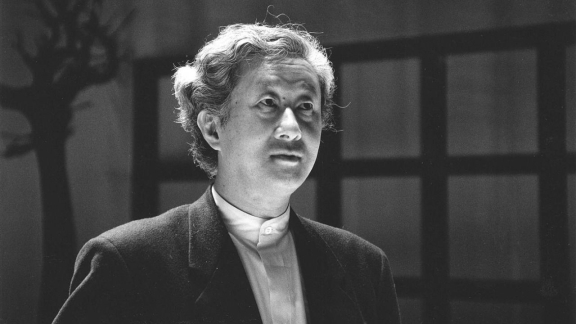

'Arata Isozaki: In Formation' illustrates late architect's lineage

An exhibition featuring the 2019 laureate of the Pritzker Prize for Architecture, Arata Isozaki (1931-2022), is underway at the Power Station of Art.
"Arata Isozaki: In Formation," running through November 9, is the first global retrospective exhibition of the architect. Mostly planned before his death in 2022 at the age of 91, the exhibition includes over 200 art pieces spanning architecture, urbanism, art, literature and design.

The exhibition centers on nine pivotal concepts – Ruin, Progress, Cybernetics, MA/Trans, Isle, Genesis, New Form, Flux and Atlas/Archipelago – that illustrate some of the lineage of Isozaki's thinking across culture, disciplines and eras.
It was jointly planned by Li Xiangning, dean of CAUP Tongji University; and Aric Chen, curator and art director of the Netherland Nieuwe Institute.
The image of ruin, as the starting point of Isozaki's career, comes from his experiences witnessing the devastation of Japanese cities during World War II.

"Incubation Process" presents Isozaki's thesis that "the future city lies in ruins."
If we regard the modern city as a constantly flowing, amorphous "sea," then every building is an "island" scattered across it, as we see in the Isle/Island concept.

"Nine Houses" (1964-1982)
Drawn partly from the villas of Renaissance Italy, the buildings in Isozaki's "Nine Houses" were conceived as being both autonomous and interrelated, like islands. Depending on the shape and topography of the site, each had a different configuration, but most featured vaulted bedrooms and other private spaces.
Contemporary cities are in constant flux, and consequently, do not resolve to a distinct image. Isozaki articulated this understanding in his article "Methods of Urban Design" (1963).
With "The Invisible City" (1967), he proposed the concept of a "cybernetic environment" as a new way of looking at urban and architectural space in the age of the computer, when "technology and planning overlap."


Isozaki's "Expo '70 Festival Plaza and Computer Aided City" incorporates cybernetic ideas.
Whether in the realm of architecture or global culture, Isozaki never defined himself as only an architect. As an indomitable internationalist, his decidedly open attitude left an indelible imprint on the modern trajectories of not just Japan, but Asia and the world.
Exhibition info:
Date: Through November 19 (closed on Mondays), 11am-7pm
Admission: 60 yuan
Venue: Power Station of Art
Address: 678 Miaojiang Road, Huangpu District
黄浦区苗江路678号
